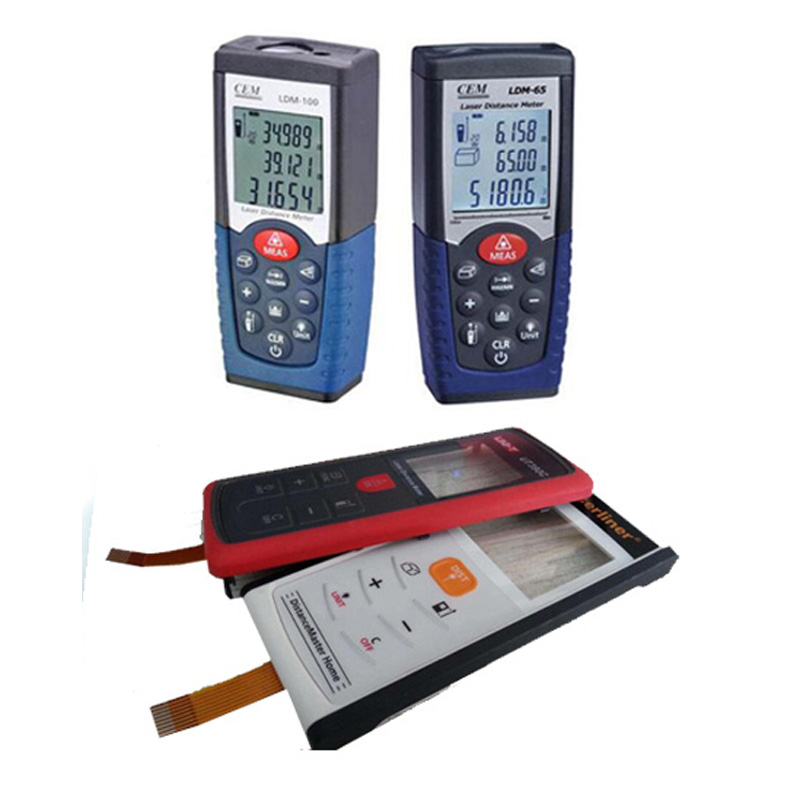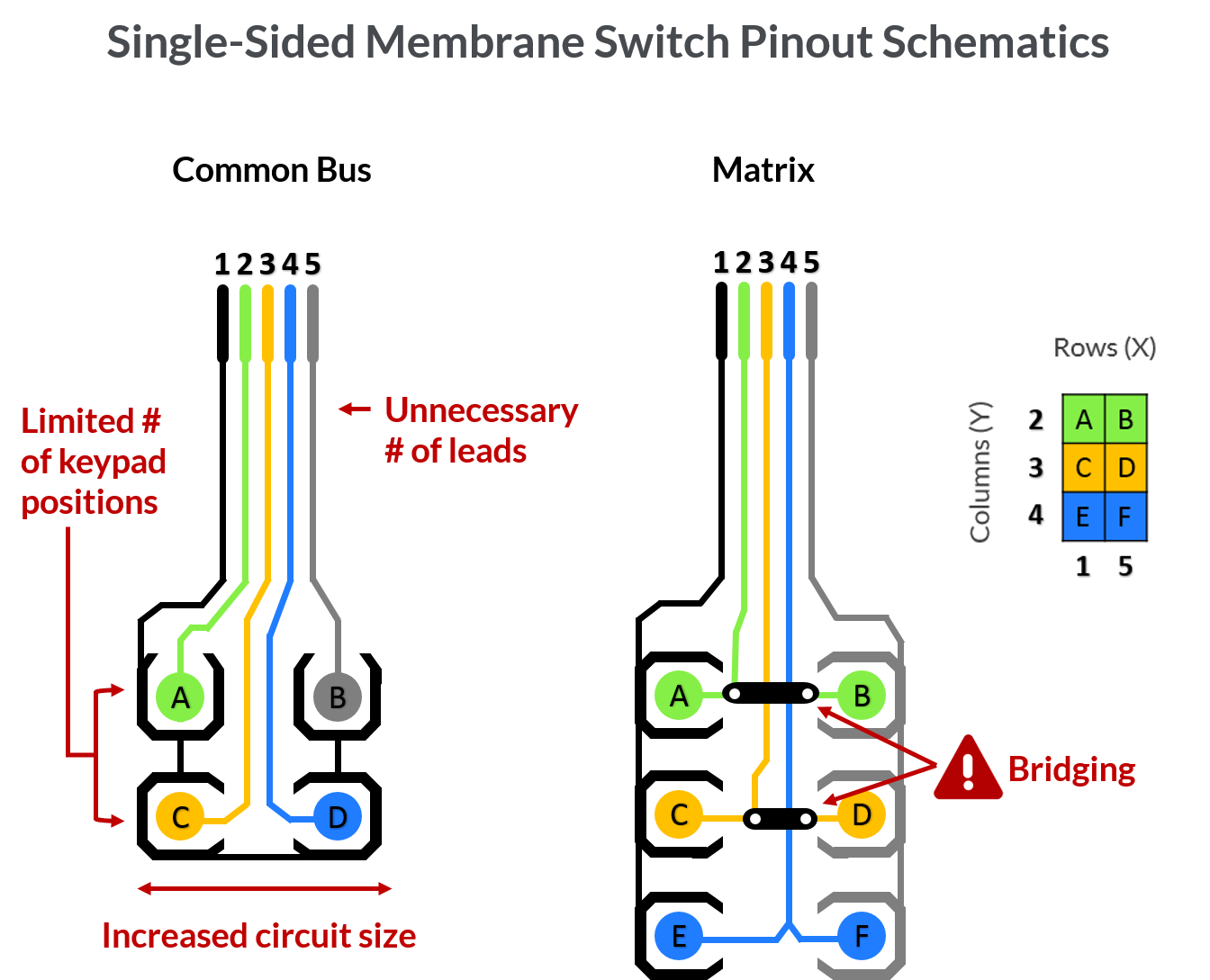Recognizing the Relevance of Membrane Switch Over in Modern Electronic Devices
Membrane layer buttons are important elements in modern-day electronic tools. They supply a mix of functionality and layout that improves customer interaction. Their long lasting and light-weight nature makes them appropriate for various applications. As markets develop, the demand for personalization and progressed attributes expands. Understanding just how membrane switches over add to technology exposes their value in forming the future of electronic devices. What lies ahead for this innovation?
The Essentials of Membrane Switch Innovation
Although commonly overlooked, membrane switch technology plays an essential function in the modern electronics landscape - membrane switch. These tools, made up of numerous layers, work as interface for different electronic items, ranging from home home appliances to clinical devices. A typical membrane layer button includes a graphic overlay, a spacer layer, and a circuit layer, which are thoroughly constructed to develop a useful interface.When stress is put on the overlay, the circuit layer is completed, allowing signals to be transmitted to the tool. This innovation is understood for its versatility, enabling customization in design, functionality, and form to satisfy details customer requirements. Additionally, membrane switches are light-weight and thin, making them appropriate for applications where room is a costs. Their durability and resistance to ecological elements even more improve their allure, ensuring they can withstand extreme conditions while maintaining capability. In general, membrane layer button innovation is integral to producing effective and user-friendly digital devices

Key Advantages of Membrane Layer Switches Over
Membrane layer switches offer a number of crucial advantages that make them a favored selection in different digital applications. Their layout allows for a portable form element, making it possible for manufacturers to produce light-weight and sleek devices. Furthermore, membrane layer buttons are immune to dust, wetness, and chemicals, which enhances their longevity and long life sought after atmospheres. The responsive feedback given by these buttons can boost user experience, making them user-friendly and easy to operate.Furthermore, membrane layer buttons can be tailored with diverse graphics and colors, permitting distinct branding chances. The production procedure is usually cost-effective, particularly for high-volume production, as it reduces setting up time and streamlines style. Finally, membrane layer switches over require very little maintenance, adding to reduced general operational costs. These benefits underscore their growing appeal in modern-day electronics, where dependability and easy to use interfaces are vital.

Applications Across Various Industries
The flexibility of membrane layer switches enables their widespread fostering across various industries. In the medical area, they are commonly utilized in analysis tools and client tracking systems, supplying a resilient interface resistant to contaminants. The vehicle industry utilizes membrane layer buttons for dashboard controls, boosting individual experience with smooth styles that stand up to extreme problems. In consumer electronic devices, they act as control board for devices such as microwaves and coffee manufacturers, providing a straightforward interface that is very easy to clean. The aerospace sector utilizes membrane layer buttons in cabin controls, where integrity and space effectiveness are critical. Additionally, the industrial field leverages these buttons in equipment and control systems to ensure durable operation popular settings. This wide variety of applications underscores the membrane switch adaptability of membrane buttons, making them indispensable elements in enhancing capability and user communication throughout diverse technical landscapes.
Personalization and Style Adaptability

Future Fads in Membrane Layer Switch Over Development
Emerging fads in membrane button growth show a growing emphasis on boosted performance and assimilation with smart technologies. As consumer demand for more innovative electronic devices boosts, producers are concentrating on producing membrane layer switches over that not only serve standard operational functions yet additionally include attributes like touch level of sensitivity, backlighting, and haptic feedback.Furthermore, innovations in products are anticipated to improve durability and environmental resistance, making membrane layer switches over suitable for diverse applications in industries such as health care, auto, and customer electronics. The integration of capacitive touch innovation is likely to become a lot more prevalent, permitting for sleeker designs and enhanced customer interfaces. membrane switch.Additionally, the increase of the Internet of Things (IoT) is prompting the growth of membrane layer changes that can connect wirelessly with other tools, boosting interconnectivity. In general, the future of membrane switch technology shows up encouraging, driven by innovation and the quest of user-friendly solutions
Regularly Asked Inquiries
How Do Membrane Changes Contrast to Conventional Mechanical Buttons?
Membrane layer buttons, being extra space-efficient and providing a smooth design, comparison with typical mechanical buttons that provide responsive feedback. The former usually include adjustable graphics, while the latter typically guarantee durability and integrity in various applications.
What Products Are Generally Made Use Of in Membrane Layer Switch Over Production?
Membrane switches are normally created making use of products such as polyester, polycarbonate, and published conductive inks. These products supply responsiveness, sturdiness, and versatility, making them suitable for various applications in electronic gadgets and individual interfaces.
Can Membrane Layer Changes Be Fixed or Reused?
Membrane layer switches can often be repaired, especially if minor issues emerge, such as sticky failure or surface damage. Complete reuse is normally restricted due to wear and potential deterioration of materials over time.
Just How Do Ecological Factors Affect Membrane Layer Change Efficiency?
Ecological elements, such as YOURURL.com moisture, temperature, and direct exposure to chemicals, significantly affect membrane switch performance. Extreme conditions can cause destruction, influencing responsiveness and long life, eventually endangering the functionality of the gadget in numerous applications.
What Is the Regular Life Expectancy of a Membrane Switch over?
The regular lifespan of a membrane switch generally ranges from 1 to 5 million actuations, depending on variables such as usage frequency, environmental problems, and the products made use of in manufacturing, impacting toughness and efficiency durability. A regular membrane layer button consists of a visuals overlay, a spacer layer, and a circuit layer, which are carefully put together to develop a useful interface - membrane switch.When stress is applied to the overlay, the circuit layer is completed, allowing signals to be transferred to the gadget. The responsive comments supplied by these buttons can enhance user experience, making them user-friendly and easy to operate.Furthermore, membrane buttons can be tailored with varied graphics and shades, allowing for unique branding opportunities. As customer demand for extra sophisticated electronic devices increases, producers are concentrating on producing membrane switches that not just serve fundamental operational duties however additionally include functions like touch level of sensitivity, backlighting, and haptic feedback.Furthermore, developments in products are anticipated to boost toughness and environmental resistance, making membrane switches over appropriate for diverse applications in markets such as health care, automobile, and customer electronic devices. The assimilation of capacitive touch technology is likely to become a lot more prevalent, enabling for sleeker styles and improved user interfaces.Additionally, the increase of the Net of Points my link (IoT) is triggering the growth of membrane layer switches over that can interact wirelessly with various other gadgets, boosting interconnectivity. Membrane layer buttons, being much more space-efficient and providing a sleek style, comparison with typical mechanical buttons that offer tactile responses